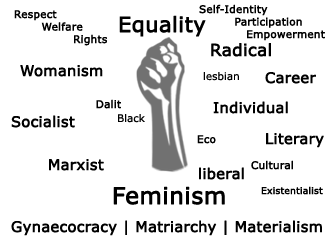Article Title :
The Visual ‘Masculinization’ of Moroccan EFL Textbooks: A Social Semiotic Analysis 
5 (2021)
1-19
visual representation , textbooks , social semiotics , gender display , Gender bias


The aim of this paper is to examine and assess the portrayal of women and men in the visual contents of Moroccan English as Foreign Language (MEFL, henceforth) textbooks from a social semiotic perspective. Central to the analysis here is Goffman’s (1979) theoretical model of gender display recently heralded as a more powerful technique to unfold the semiotic positioning of women and men in visual images. The analysis of a corpus of photographic data has helped unveil an array of social and cultural misconceptions in discrimination of women. Female characters continue to be linked with submissiveness, absent-mindedness, and socio-psychological vulnerability. They are further presented associated with menial activities, low-status jobs, and oftentimes being positioned in the backstage behind men. The paper ends up presenting the conclusion along with some implications.

The paper focuses on portrayal of women and men in the visual contents of Moroccan English textbooks.
Central to the analysis here is Goffman’s (1979) theoretical model of gender display.
The photographic data has analysis of discrimination of women.
The paper ends up presenting the conclusion along with some implications.
Barthes, R., 1977. Image, Music, Text. London: Fontana.
Belknap, P. and Leonard, L, 1991. A Conceptual replication and extension of Goffman‘s study of gender advertisements. Sex Roles 25, 103-118.
Bell, P, 2001. Content analysis of visual images. In T. van Leeuwen and C. Jewitt (eds.), Handbook of Visual Analysis, 10-34. London: Sage.
Berger, J., 1972. Ways of Seeing. London: Penguin.
Bouddouch, H., Ahellal, M., and Messaoudi, S., 2010. Visa to the World. Dar Nachr Almaarifa.
Chandler, D., 2007. Semiotics the Basics. Second Edition. Taylor and Francis e-Library, London and Newyork.
Goffman, E., 1979. Gender Advertisements. Cambridge, MA: Harvard University Press.
Hammani, M., Ahssen, S. and Tansaoui, L., 2009. Ticket to English. Book1. DIO. El Hadita.
Hammani, M., Ahssen, S., and Tansaoui, L., 2009. Ticket to English. Book2. DIO. El Hadita.
Harper, D., 2012. Visual Sociology. London: Routledge.
Hassim, M., Blibil, M. and Ramsmy, A., 2010. Gateway to English. Book 2. Nadia Edition.
Hassim, M., Blibil, M. and Ramsmy, A., 2010. Gateway to English.Book 1.Nadia Edition.
Holsti, O. R., 1968. Content analysis. In G.Lindzey and E.Aronson (eds.), The Handbook of Social Psychology, 2nd Ed., 596-692, New Delhi: Amerind Publishing Co.
Jappy, T, 2013. Introduction to Piercean Visual Semiotics. Bloomsbury Advances in Semiotics. Bloomsbury Academic.
Jhally, S., 2009. Codes of Gender: Identity and Performance in Pop Culture. (Videotape). Massachusetts: Media Education Foundation.
Kang, M. E., 1997. The portrayal of women’s images in magazine advertisements: Goffman’s gender analysis revisited. Sex Roles, 37(11/12), 979-996.
Kress, G., 2003. Literacy in the New Media Age. London, Routledge.
Kress, G., 2010. Multimodality: A Social Semiotic Approach to Contemporary Communication. London: Routlege.
Kress, G., and van Leeuwen, T, 2006. Reading Images. The Grammar of Visual Design. 2nd Edition. London: Routledge.
Mejber,R,. Bagui, B., Kessab, A., and Oujjani, M., 2008. Al Massar: Window on the World. Nadia Edition.
Najbi,M, and El Haddad, E., 2008. Insights into English. El Massar Edition.
Oulbouch, A., Yacine, M., Moussabbir, B. and Drissi Chbihi, N., 2008. Focus. Nadia Edition.
Oulbouch,A. and Yacine, M., 2006. Outlook. Inter Graph.
Sadiqi, F., 2008b. Gender perception in Moroccan culture. Cultural and Civilizaional Realities. 5, Langue Anglais. Bilingual Anglais.
Saussure, F. de, 1916/1983. Course in General Linguistics (trans. Roy Harris). London: Duckworth.
Sunderland, J., 1994. Differential teacher treatment-by-gender in the EFL classroom: Using ex-Participants perspectives. In Sunderland, J. (Ed) Exploring Gender: Questions and Implications for English Language Education 148-153, London, Prentice Hall.
Sunderland, J., 1994. Introduction. In J. Sunderland (ed.). Exploring Gender: Questions and Implications for English language education. London: Prentice Hall.
Van Leeuwen, T., 2001. Semiotics and iconography. In: VL, Th. and Jewitt, C. (Eds) Handbook of Visual Analysis, 92-119. London and New- York: Sage Publications.
Sabir, A., 2005. Review of Moroccan School Textbooks for Gender Equality and Human Rights: Project Results. Retrieved on 13-10-2010.
Mathuvi, Ireri, A.M., Mukuni, D. M. Njagi, A. M. and Karugu, N. I., 2012. An Analysis of Gender Displays in Selected Children Picture Books in Kenya Philomena N. International Journal of Arts, 2(5), 31-38.






